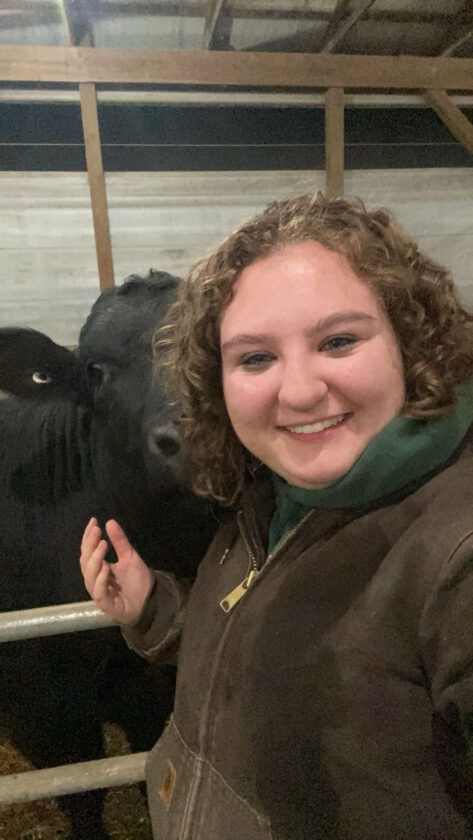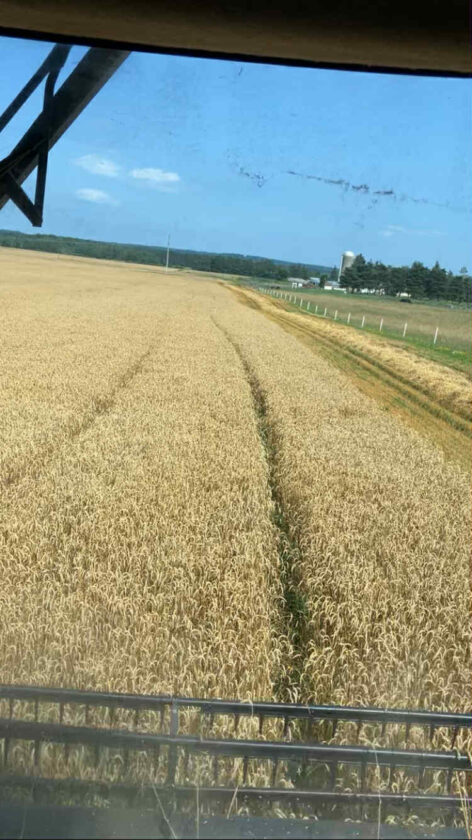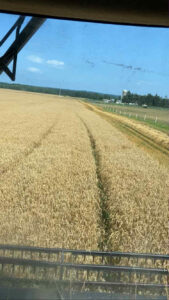Wheat harvest in full swing in northern Michigan

Emilee Manning
Looking around the fields in northern Michigan a few weeks ago and you might have seen golden fields with wheat moving with the wind. That isn’t as prevalent anymore though. Winter wheat harvest is in full swing in northern Michigan. According to the Michigan Ag Council, wheat is farmed on approximately 500,000 acres throughout 75 counties in Michigan. In fact, Michigan ranks in the top 15 states in the United States in the production of winter wheat.
Farmers all over the area have been scrambling to get wheat off of the fields between rain storms, taking advantage of any dry window they can get, to combine their wheat. In order to efficiently harvest wheat, the fields have to be dry. If the wheat has too high of a moisture content when harvested, or is too wet, it will mold in storage if it is not properly dried. Wheat harvested when it is too dry may cause issues with equipment and may decrease the quality of the grain itself. Pioneer Seeds, a popular seed company, recommends harvesting wheat between 20% and 14% moisture, but artificially drying the wheat if harvested between 18% and 20% to prevent mold and mildew.
Justin and Samantha Timm, like many other farmers lately, have been facing dropping prices in their crops. In July 2024, the average price of wheat was $5.70 per bushel. In July 2025, the average price dropped to $5.58. Some farmers opt to contract for a certain amount of grain to lock in a set price to avoid any drops in prices. The Timms have taken advantage of that opportunity as a way to be sure any significant price drops wouldn’t catch them off guard.
“We usually have some contracted to secure pricing, which has benefitted us the last few years as the market has been declining,” Samantha Timm stated, “and it is usually higher anyway if you contract ahead of time. Unless there is some huge shift in the market, but we haven’t seen that in a while.”
These contracts state that the farmer must provide a certain number of bushels of wheat, and the price per bushel they will be paid.

Courtesy Photo A wheat field is seen in northern Michigan.
Wheat is often milled into flour, which is used in crackers, pastries, breads, and other baked goods. Wheat can also be used as animal feed. Wheat that does not meet the standard for human consumption may also be used as feed for beef cattle, if used with caution to avoid digestive issues due to its nutrient content.
Sam and Justin Timm keep some of their wheat harvest to plant next season. The rest they either store in bins and sell in the future or they will truck to The Anderson’s grain elevator where they sell the grain to their partners for manufacturing.
The words “winter wheat” continue to appear. Does that mean there is a “spring wheat” or “summer wheat?” Sort of. There are “winter wheat” and “spring wheat,” with only a few slight differences. Winter wheat is planted in the fall and then harvested in the spring. It begins growing before the weather gets cold, becomes dormant during the winter months, and resumes growth once the weather warms up and the wheat is ready for harvest by June or July. Spring wheat is planted in April and May, and grows during the summer to be harvested in late August to early September.
Spring wheat is often believed to be a higher quality wheat because it is more mature when it is harvested. Because it has grown longer, it has more nutrients. Spring wheat is often used in breads and pasta, and is often higher in protein than winter wheat. Winter wheat is often used in whole grain flour for whole wheat baked goods.
- Emilee Manning
- Courtesy Photo A wheat field is seen in northern Michigan.







